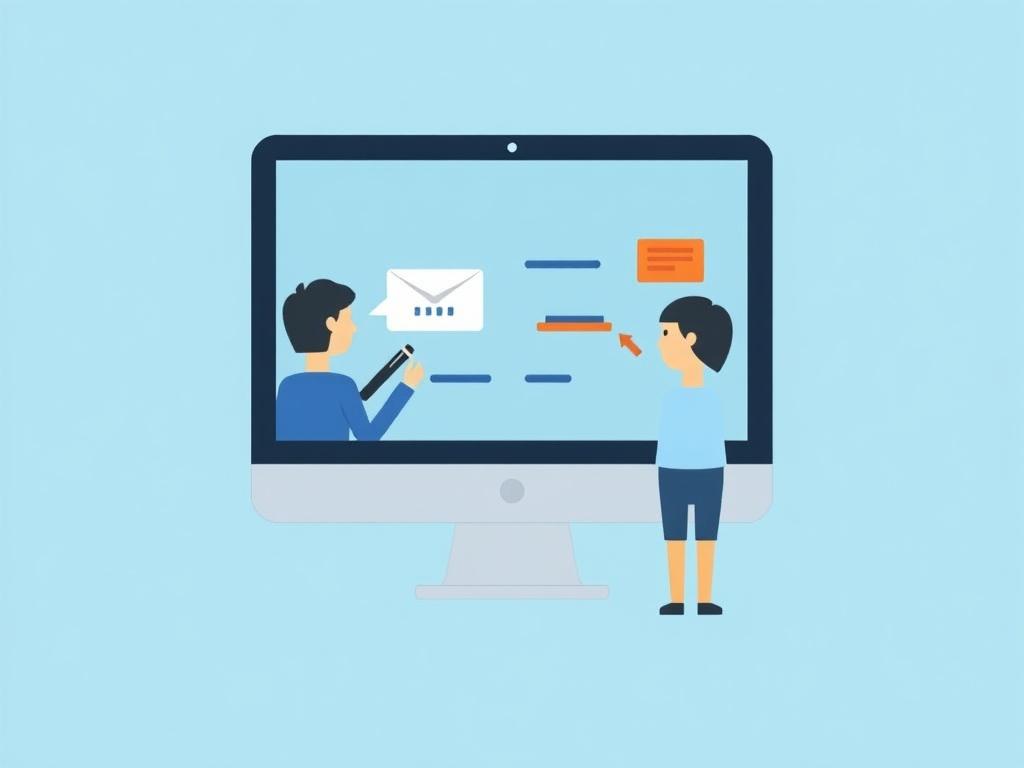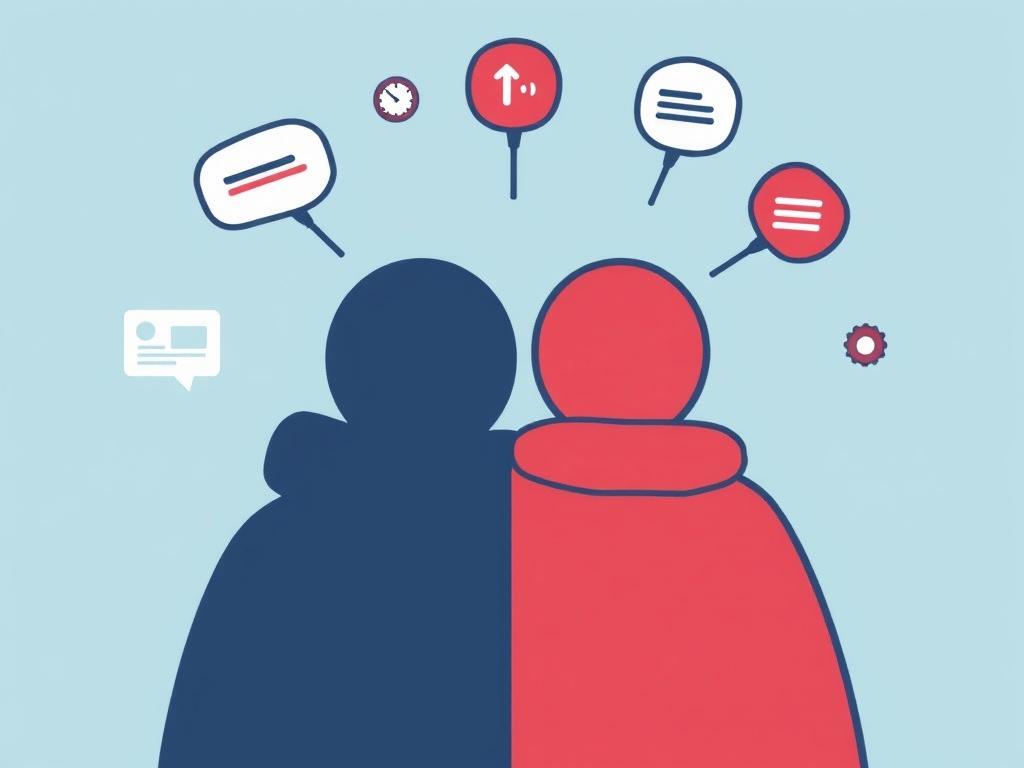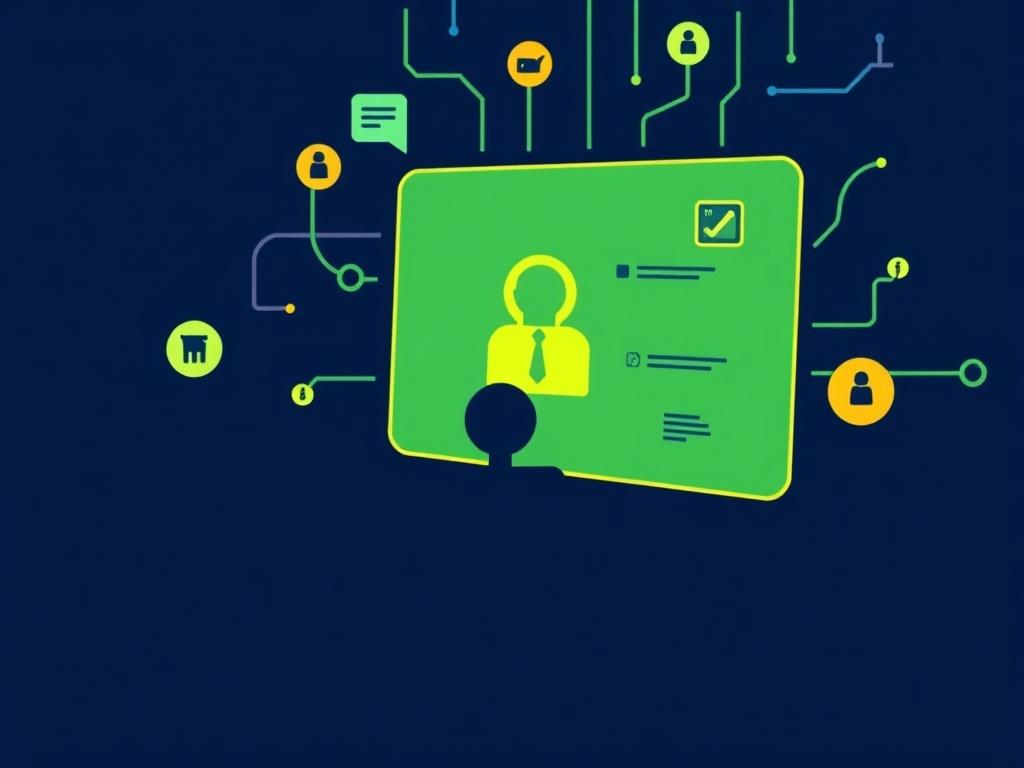Personalization is no longer a novelty or a buzzword tossed around in marketing meetings — it’s an expectation. Think about the last time you opened an email that mentioned your name, recommended something you genuinely wanted, or surfaced a product on a website that felt like it understood you. Those little moments add up. They move people from passive visitors to engaged customers. In this article we’ll explore, step by step, how to deliver the right message to the right person: the strategy, the data, the tools, ethical considerations, and practical playbooks you can use today.
We’ll keep it conversational and practical, so whether you’re a marketer trying to win more conversions, a product manager designing more relevant features, or a small business owner who wants to stop shouting into the void, you’ll find useful advice. We’ll cover both the big-picture thinking and the nuts-and-bolts tactics — from segmenting audiences to real-time personalization techniques. By the end, you’ll have a clear sense of how to plan and execute personalization that feels thoughtful rather than creepy.
Why Personalization Matters — Beyond Clicks and Open Rates

We all know personalization improves metrics, but it’s more than numbers. At its core, personalization is about relevance and respect. When you deliver content that aligns with someone’s needs and context, you’re signaling that you value their time. That builds trust, which fuels loyalty.
On the business side, personalization drives measurable outcomes: higher open and click-through rates in emails, longer session times on websites, increased conversion rates, lower churn, and higher lifetime customer value. But it also supports better customer experiences by reducing friction — surfacing the right help article at the right moment, or showing product recommendations that make sense based on prior behavior.
However, personalization is a craft. Poorly executed personalization — irrelevant product recommendations, awkwardly placed pop-ups, or messaging that feels invasive — can backfire. The key is to balance usefulness with respect for privacy and context.
The Psychology Behind Personalized Messaging
People are wired to respond to relevance. When someone recognizes that a message speaks directly to their situation, cognitive load decreases: they don’t have to search for value. Personalization taps into cognitive shortcuts like the recognition heuristic and social proof. It also satisfies the human preference for being seen and understood. That said, there’s a narrow line between being helpful and feeling watched; the former delights, the latter alienates.
Data: The Fuel for Personalization
Personalization requires data, but not all data is equally valuable. The most useful types of data for personalization include:
- Demographic data — age, location, language, job title.
- Behavioral data — pages viewed, products browsed, time on page, click patterns.
- Transactional data — purchase history, frequency, average order value.
- Contextual data — device type, referral source, time of day, weather.
- Engagement data — email opens, clicks, content downloads, form submissions.
- First-party data — data you collect directly from users (best quality and privacy-friendly).
Collecting this data ethically and accurately is the first step. A single, accurate source of truth prevents mixed signals: your email system should align with your website personalization logic, and your CRM should reflect the same truths you’re using to segment audiences.
How Much Data Do You Need?
You don’t need perfect knowledge to start personalizing. Start with the minimal set of reliable signals that meaningfully predict behavior — for many organizations, that’s location, referral source, and recent browsing or purchase behavior. Over time, enrich that profile with more signals. The principle: act on what you know confidently, not on shaky assumptions.
Segmentation vs. Individualization vs. One-to-One
Personalization sits on a spectrum:
- Segmentation: Grouping users by shared traits — e.g., new subscribers, repeat buyers, or location-based segments. This is the most accessible form of personalization and often delivers big wins.
- Individualization: Tailoring content based on individual behavior and preferences — product recommendations based on past purchases, or content suggestions derived from reading history.
- One-to-one personalization: True 1:1 experiences that adapt in real-time to a specific person’s context and needs — highly effective but resource-intensive.
Many teams do well starting with segmentation and moving toward individualization as data and tooling mature.
Practical Segmentation Examples
- New visitors vs. returning customers
- Abandoned cart shoppers
- High lifetime value customers
- Leads in different stages of the funnel (top, middle, bottom)
- Active users vs. dormant users (for re-engagement campaigns)
Crafting a Personalization Strategy
A practical personalization strategy has five components: goals, audience, data, tactics, and measurement.
1. Define Clear Goals
Start with what you want to achieve. Is it increasing email revenue, reducing churn, boosting trial-to-paid conversion, or lowering support ticket volume? Your goals determine which data to prioritize and what tactics to test.
2. Map Audiences to Intent
Identify who your audience segments are and what they intend to achieve at each stage of their journey. Map content to intent: awareness-stage visitors need educational content; purchase-stage users need reassurance and social proof.
3. Select Data Sources and Technology
Decide which data sources you’ll use and ensure systems can share that data. Common tech includes a CRM, content management system (CMS), email marketing platform, analytics tool, and optionally a Customer Data Platform (CDP) for stitching identities across channels.
4. Prioritize Tactics
Don’t try to do everything at once. Choose a small number of high-impact, low-effort personalization tactics to test first — those that align with your goals.
5. Measure and Iterate
Define metrics tied to your goals and run experiments. Use A/B testing to prove what works, then scale successful approaches.
Channels and Tactics: Where Personalization Happens
Different channels allow different levels of personalization. Here are practical tactics for common channels.
Email Personalization
Email is a primary personalization battleground because it directly reaches people and supports dynamic content.
- Personalized subject lines (use sparingly and with relevance).
- Dynamic content blocks that change based on segment (e.g., product categories vs. promotions).
- Triggered emails based on behavior — abandoned cart, browse abandonment, reactivation, post-purchase follow-ups.
- Product recommendations powered by past purchases or browsing signals.
Email personalization often offers a high ROI because it’s relatively easy to implement and test.
Website Personalization
Web personalization can range from simple to advanced:
- Geo-targeted messaging — show local store hours or region-specific promotions.
- Behavioral banners — if someone viewed a product but didn’t buy, show related content or a discount.
- Personalized product recommendations on homepage or checkout pages.
- Adaptive navigation — highlight categories a user interacts with most.
Real-time personalization requires fast decisioning engines and reliable user identification (cookies, logged-in profiles, or hashed identifiers).
In-App and Mobile Personalization
Mobile apps and in-product experiences are ideal for contextual personalization. Use push notifications sparingly and with contextual triggers, personalize onboarding flows based on user goals, and suggest features or content based on usage patterns.
Social and Paid Advertising
Personalization in ads increases relevance: retargeting ads, lookalike audiences based on high-value customers, and personalized landing pages for specific ad groups all bridge ad spend to conversion intent.
Conversational Personalization
Chatbots and live chat systems can pull user context into conversations. Route people to the right help article, product, or human agent based on behavior and account data, and use personalization in the bot’s responses to feel more natural.
Personalization Techniques and Patterns

Let’s dig into specific techniques you can apply.
Rule-Based Personalization
Rule-based personalization follows if/then logic. For example: “If a user is in the cart-abandonment segment, then show a 10% discount pop-up.” It’s straightforward and predictable, making it a solid place to start.
Algorithmic Personalization
Algorithms (recommendation engines, collaborative filtering, content-based recommendations) learn from behavior at scale to suggest items a user may like. They’re more flexible but require data and iteration.
Predictive Personalization
Predictive models estimate future behaviors: who’s most likely to churn, who will convert, or which products a user will buy next. These models inform targeted interventions like retention offers or cross-sell campaigns.
Real-Time Personalization
Real-time personalization adapts the experience the moment new data becomes available — e.g., changing the homepage hero to match a product category the user just browsed. It’s powerful for capturing intent, but requires low-latency systems and robust identity resolution.
Micro-Personalization
Micro-personalization focuses on tiny, contextual touches: swapping an image to match a person’s region, tailoring copy to fit an audience’s preferred language or unit system, or offering time-sensitive tips based on their last action. These subtle shifts can significantly improve perceived relevance.
Tools and Technology Stack
There are many tools that help with personalization. Here’s a practical way to think about them in layers.
| Layer | Purpose | Examples |
|---|---|---|
| Data collection | Capture events, transactions, and profiles | Analytics (Google Analytics, Mixpanel), tag managers |
| Identity stitching | Resolve user identities across touchpoints | Customer Data Platforms (Segment, mParticle) |
| Storage & orchestration | Store profiles and enable data access | Data warehouses, CDPs, CRMs |
| Decisioning engines | Make real-time personalization decisions | Recommendation engines, personalization platforms (Optimizely, Dynamic Yield) |
| Execution | Deliver personalized messages | Email platforms, CMS, ad platforms, in-app messaging |
| Measurement | Track and analyze outcomes | A/B testing tools, analytics suites |
Build a stack that fits your scale. Start with what you have, and add components as you identify gaps.
Privacy, Trust, and Ethics

Personalization relies on data, which brings responsibility. People want relevance, but they also want control and transparency.
Best Practices for Ethical Personalization
- Be transparent about data use — clear privacy notices and accessible controls build trust.
- Prefer first-party data — it’s more privacy-friendly and future-proof against third-party cookie deprecation.
- Give users control — allow them to update preferences, opt-out of personalization, or delete data.
- Don’t be creepy — avoid surfacing hyper-personal details in public spaces or using sensitive signal for trivial personalization.
- Comply with regulations — ensure GDPR, CCPA/CPRA, and other relevant legal requirements are met.
Ethical personalization not only reduces risk; it produces better long-term outcomes because customers feel respected.
When Personalization Feels Wrong
Sometimes personalized messages can cross the line — such as using recent hospital visit data for ads. If personalization could harm, exclude sensitive attributes from automated decisioning and add human oversight to campaigns that use powerful predictive models.
Measurement: How to Know If Personalization Works
Measure outcomes tied to your goals. Common metrics include:
- Conversion rate and lift vs. control groups
- Click-through and open rates for personalized emails
- Average order value and revenue per user
- Engagement metrics: time on page, pages per session, feature usage
- Retention and churn rates
- Customer satisfaction scores (CSAT, NPS)
A/B testing is the backbone of proving personalization’s impact. Always test personalization against a reasonably sized control group and run long enough to capture reliable behavior changes.
Attribution Challenges
Attributing revenue to personalization is tricky because experiences span channels and time. Use lift analysis, holdout groups, and event-based tracking to approximate causal effects.
Organizational Readiness and Operations
Personalization is as much about people and process as it is about technology. High-performing personalization teams share certain habits.
Cross-Functional Teams
Marketing, product, engineering, data science, and legal need to collaborate. Data and tech teams build the plumbing; marketers craft messages; product teams ensure in-product personalization integrates well; legal ensures compliance.
Governance and Data Quality
Set up governance: data dictionaries, naming conventions, and a central source of truth. Poor data quality undermines personalization efforts — nothing kills trust faster than showing the wrong name or offering irrelevant recommendations.
Playbooks and Templates
Create reusable personalization playbooks: templates for onboarding personalization, cart abandonment flows, and win-back campaigns. Templates speed deployment and maintain consistency.
Common Pitfalls and How to Avoid Them
Personalization projects can stall or fail for predictable reasons. Here are common pitfalls and remedies.
- Pitfall: Overcomplicating with too many segments.
Fix: Start with a few high-value segments and iterate. - Pitfall: Poor identity resolution (multiple profiles for one person).
Fix: Invest in identity stitching early or enforce login-based personalization where possible. - Pitfall: Using sensitive data without consent.
Fix: Define data use policies and exclude sensitive attributes. - Pitfall: Lack of measurement and iteration.
Fix: Build A/B tests into every personalization initiative.
Practical Personalization Playbook — Step by Step
Here’s a pragmatic checklist you can follow to build your first meaningful personalization program.
- Define the business outcome you want to impact (e.g., increase trial-to-paid conversion by 20%).
- Identify 2–3 segments most likely to influence that outcome.
- List the minimal data signals you need for those segments (e.g., trial start date, product usage, email engagement).
- Choose one channel to test (email or website) and one tactic (triggered emails for trial milestones or a personalized homepage banner).
- Set up tracking and a measurable control group for A/B testing.
- Run the test, measure results, and document learnings.
- Scale what works and iterate on the next segment or channel.
This iterative approach reduces risk and helps you learn quickly.
Examples and Mini Case Studies
Real-world examples make personalization tangible.
Example 1: E-commerce — Cart Abandonment
An online retailer uses behavioral triggers to send a series of cart abandonment emails: first within an hour with a reminder, a second email 24 hours later showing customer reviews for products in the cart, and a final email with a small discount for items still abandoned after three days. Personalization includes product images, the user’s name, and related product suggestions. The result: increased recoveries and higher average order value from cross-sells.
Example 2: SaaS — Trial Conversion
A SaaS company personalizes onboarding emails based on feature usage. Users who haven’t completed core onboarding tasks receive targeted tips with short video clips; those using advanced features get case studies showing how power users succeed. The outcome: faster time-to-value and improved trial-to-paid conversion.
Example 3: Media — Content Recommendations
A content publisher personalizes article recommendations on the homepage and in emails based on reading history and preferences. They also use contextual signals like time of day (short reads in the morning, longer reads in the evening). Engagement metrics rise, and subscription conversions improve.
Advanced Topics: AI and the Future of Personalization
AI and machine learning are expanding what’s possible in personalization. Models can predict churn, personalize content sequencing across email and in-product messages, and even generate personalized copy.
- Language models can craft subject lines or microcopy tailored to segments.
- Reinforcement learning can optimize multi-step personalization policies over time.
- Computer vision and audio analysis can feed personalization in media-rich experiences (e.g., show images aligned with a user’s style preferences).
These capabilities are powerful, but they require careful governance and continuous monitoring for bias and drift.
Keeping Humans in the Loop
Even advanced AI systems benefit from human oversight. Marketers should set guardrails, review generated content, and continually tune models based on qualitative feedback.
Checklist: Personalization Launch Readiness
Use this checklist before you launch a personalization initiative:
- Clear business objective and metrics
- Defined audience segments and supporting data signals
- Reliable identity resolution
- Technology stack capable of delivering personalization
- A/B testing framework in place
- Privacy and consent checks completed
- Rollout and rollback plans
- Monitoring and alerting for unexpected outcomes
Future Trends to Watch
Personalization will evolve along several trajectories:
- Privacy-first personalization — techniques that rely on on-device models, federated learning, and aggregated signals to reduce reliance on centralized personal data.
- Contextual personalization — deeper use of immediate context (time, location, device state) for more relevant experiences.
- Omnichannel orchestration — unified experiences where messages and content adapt seamlessly across email, app, web, and offline touchpoints.
- Ethical AI and transparency — growing demand for explainable personalization decisions and clearer user controls.
Staying adaptive and prioritizing user trust will separate winners from losers.
Conclusion
Personalization is a powerful way to make interactions more relevant, reduce friction, and build loyalty, but it requires a clear strategy, reliable data, thoughtful technology choices, and above all, respect for users’ privacy and preferences; start small with high-impact segments and channels, measure rigorously, iterate based on evidence, and keep human oversight in the loop so your personalization efforts feel helpful rather than intrusive, delivering the right message to the right person at the right time.